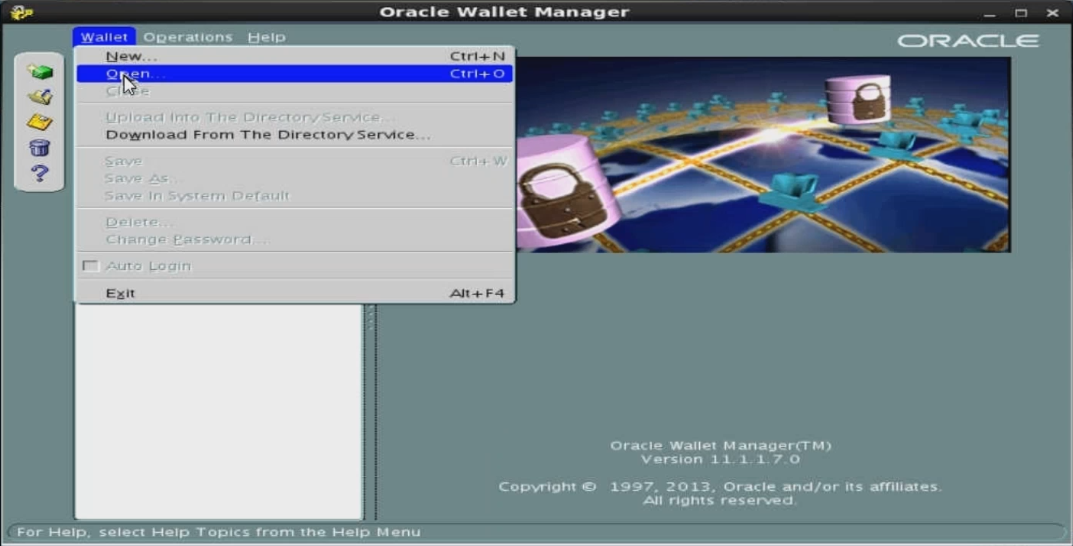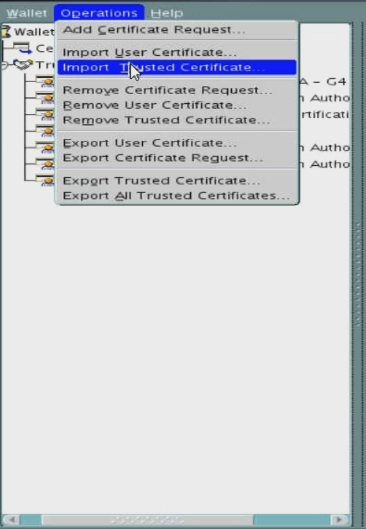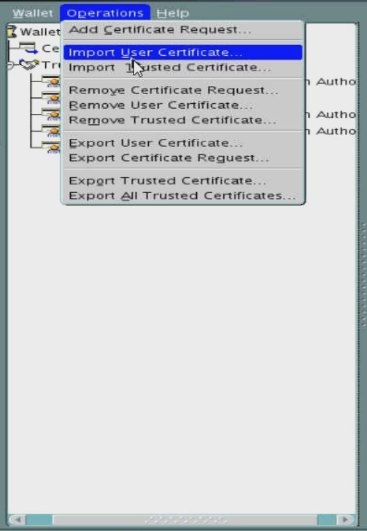Like the majority of server systems you will install your SSL certificate on the same server where your Certificate Signing Request (CSR) was created. Your private key will always be left on the server system where the CSR was originally created. Your SSL certificate will not work without this private key file. We will assume that this is the original system.
To install your SSL certificate on Oracle Wallet Manager perform the following.
Step 1: Downloading your SSL Certificate, its Intermediate CA certificate & Root Certificate:
- If you had the option of server type during enrollment and selected Other you will receive a x509/.cer/.crt/.pem version of your certificate within the email. Alternately you can access your Certificate User Portal by the supplied link in the email to pick up the x509 version of your certificate.
- Copy the SSL certificate and make sure to copy the —–BEGIN CERTIFICATE—– and —–END CERTIFICATE—– header and footer Ensure there are no white spaces, extra line breaks or additional characters.
- Use a plain text editor such as Notepad, paste the content of the certificate and save it with extension .crt
- If your intermediate CA certificate for your product is not in the body of the email you can access your Intermediate CA also in a link within that email. Copy and paste the contents of your Intermediate CA into its own Notepad file and save it with a .crt extension also.
Note: Some CAs may require two intermediates for best compatibility. These two are to be copied within their own corresponding .crt files and installed one at a time in a repeated process for intermediate installation. - Getting your Root CA will vary and you may have to consult your CA in order to get this. It must be in its own Notepad file and saved with a .crt extension. Click here to see a list of intermediates and roots the SSL Support Desk has on file.
Step 2: Importing the Root CA:
- Open Oracle Wallet Manager.
- Click Wallet > Open.
Specify the location/path of the wallet you created during CSR creation.
- One you have opened your wallet Select Operations > Import Trusted Certificate. The Import Trusted Certificate dialog panel is displayed
- Specify the file name and path of the Root CA certificate you downloaded and saved described in Step 1.
- Select the name of the Root CA certificate file (e.g. RootCA.crt).
- Click OK.
A message at the bottom of the window informs you that the trusted certificate was successfully imported into the wallet.
Step 3: Importing the Intermediate CA Certificate:
- Select Operations > Import Trusted Certificate. The Import Trusted Certificate dialog panel is displayed
- Specify the file name and path of the Intermediate CA certificate you downloaded and saved described in Step 1.
- Select the name of the Intermediate CA certificate file (e.g. Intermediate.crt).
- Click OK.
A message at the bottom of the window informs you that the trusted certificate was successfully imported into the wallet.
Step 4: Importing your SSL Certificate:
- From the Operations menu, click Import User Certificate. The Import Certificate dialog box appears.
- Select Select a file that contains the certificate, and click OK. Another Import Certificate dialog box is displayed.
- Enter the path or folder name of the SSL certificate file location.
- Select the name of the SSL certificate file (i.e ssl_certificate.crt, as described in Step 1).
- Click OK.
After the SSL certificate installation succeeds, a message at the bottom of the window confirms that the certificate was successfully installed. You are returned to the Oracle Wallet Manager main panel, and the status of the corresponding entry in the left panel subtree changes to [Ready].
Note: Oracle Wallet Manager 10.x.x.x does not support SSL certificates signed with a SHA2 Signature Algorithm. In order to support SHA2 certificates, you will need to upgrade to Oracle Wallet Manager 11.2.0.1. by contacting Oracle.
Oracle Support
For more information refer to Oracle.


